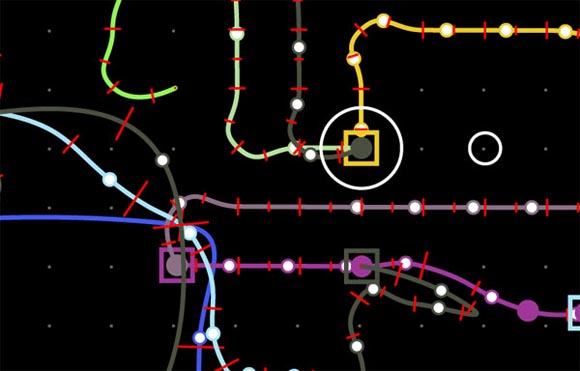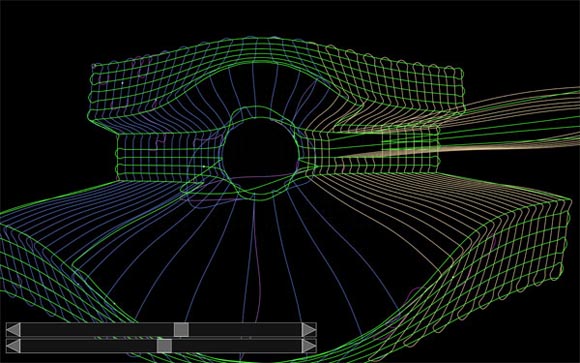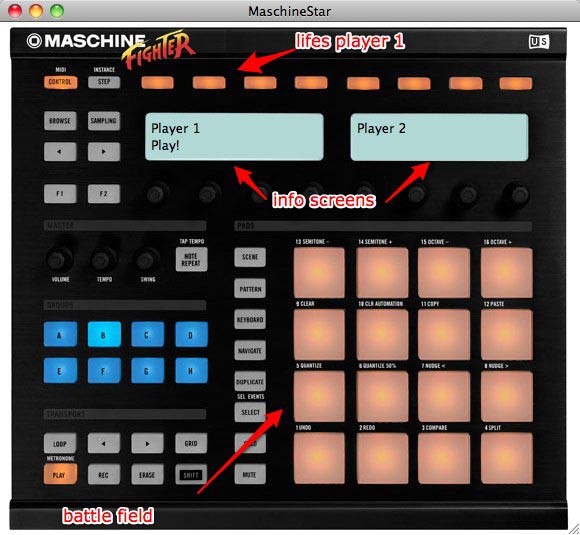
Take a weekend, and make something: that’s the challenge behind the Music Hack Day, which joins a growing phenomenon of events built around collective creation. (CDM held its own tangible interface hackday online, which I definitely hope to follow up soon!) Initiated by Dave Haynes of music sharing service Soundcloud, the Hack Day has already hit London. Many of the events were Web app-based and focused on consumption rather than creation of music, but we also saw a chordal synth plug-in and beer bottle percussion instrument.
The Berlin Hack Day, which wound up earlier today, offers still more projects focused on the creation side of music hacking. Having Ableton and Native Instruments as sponsors likely helped the mood. And as you’d expect from one of the world capitals of creative hacking, Berliners don’t disappoint.
Among the projects: a beautiful, elegant 3D sequencer, a fun bird-and-sky multitouch soundmaker with multitouch trackpad input, and a robotic xylophone controlled by monome. Someone even worked out a way to turn NI’s Maschine into a rhythm game, complete with Street Fighter sounds.
I’ve got some of my favorite projects here, but see also an eyewitness report (in English and Italian) at Audio News Room:
Just back from Music Hack Day Berlin
… and keep your eye on the wiki:
Berlin Hack Submissions
xylobot run by monome from robb on Vimeo.
Monomist Rob Böhnke and Ramsey Arnaoot created one of my favorite hackday projects so far: a monome-controlled robotic xylophone. The ingredients: one monome grid controller, one Java application for step sequencing to the output, one Arduino open source controller board, and one terrific xylophone “robot” made of an array of servos that strike the bars of the instrument. Oh, and some hot glue and wood, of course.
Of course, what’s especially impressive is nailing this in just a weekend – imagine what they could do with more time and iterations.
Proof that musical visualizers don’t always have to be trippy, futuristic, Tron-like 3D landscapes (and that’s me speaking as a fan of such things), Gernot Poetsch instead chose a whimsical environment with clouds and cartoon birds, inspired by the graphic identity of Twitter. (No actual Twitter is involved, meaning you lose the, ahem, unreliable, buggy, unfiltered chat network but keep the cutesy happy sky! Works for me!)
The visuals are built in Quartz Composer, which via OSC transmits messages to synthesis language ChucK for noisemaking. The surprise is, the multitouch input is not a Lemur or an iPhone – it’s the new MacBook touchpad under Snow Leopard!

iLoveAcid is a beautiful-looking nodal sequencer by Jakob Penca which uses wireframe “tracks” to guide music playback through a sequencer, transmitting events to your soundmaker of choice via MIDI or OSC. By using curved timelines and connections, it’s a veritable model railroad of music, in which formations combine to form more complex structures instead of simply stepping across a grid. Despite appearances, it is so far only two-dimensional – but then, the z displacement could easily be assigned to some form of modulation. I’m really eager to see the video of this.
One ingredient: Processing, which makes it easier to write visual code and to connect to Java libraries.

The hardware controller for Native Instruments’ Maschine software drum machine has been adapted to other software, like Ableton Live. But this is surely the first time it’s been made into a game. Using Maschine’s MIDI output as a game control and sounds from Street Fighter, MaschineFighter is a simple, Simon-style rhythm game. Unlike Simon, though, there’s a twist – instead of rote patterns generated in advance, you face off against a friend and try to out-rhythm each other, battle style. I think it’s actually a pretty brilliant idea, and could become a new sensation for us electronic music nerds – not to mention, it’ll finally test our rhythm in a way electronic performance often does not. (Correction: It is Mac-only, making use of the PYMIDI Objective-C based library, which, since everything else that starts with “Py” usually means Python – a la jThings that mean Java – I assumed, incorrectly, was built on Python. But anyway, if you like the idea, carry on! And, actually, having a pure Objective-C CoreMIDI interface is also pretty awesome.)
Hoping for a video of this, too.
If you have a project that didn’t make this list, or if you add documentation after the fact, let us know.